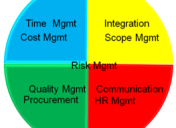7 Simple Strategies in Getting Things Done by Jack Canfield
One of the most common questions I receive is “Jack, how do you get so much done?” It’s a fair question, considering I’ve written 150 books, deliver an average of 50 live presentations around the world each year, invest a considerable amount of time with my Train the Trainer students, lead the Transformational Leadership Council, yet still have time to cultivate an amazing relationship with my wife, spend time with my kids and close friends, and take excellent care of my health.

Strategy #1: Get Clear About What’s Required
When people set goals, particularly at the beginning of the year when working on their New Year’s resolutions, they tend to be overly optimistic about how much is actually possible. As a result, they over-commit or make lists that are far too long.
I’ve fallen into this trap before. I’ve learned that to be realistic, I must take the time to break goals down and ask, “What would actually be required for me to achieve this goal? How many hours would that take?” Once I have a list of activities and estimates of the time needed to achieve each item, I pull out my calendar and start scheduling all the activities.
This is the point when you come face to face with reality. If you realize that there’s not enough time in the day to accomplish everything you want, it’s time to go back and prioritize your goals. Once you’ve identified the things that are most important to accomplish, schedule the activities that those goals will require, and set aside the rest of your goals for later.
Strategy #2: Create a Daily Schedule
Simply setting aside time in your calendar may not be enough to achieve your goals. I go the extra step and create a daily schedule. Additionally, I use the Rule of 5. Each day I choose 5 specific tasks that will move me toward the completion of my goals and I ensure those tasks are included in my daily schedule. Daily use of the Top 5 Priority Action post-its can help keep your daily task list front and center. So if one of my daily tasks is to work on my book, I don’t simply say, “I’ll work on my book today” – I actually designate the hours that I’ll work on my book. This has been an essential step in ensuring that things actually get done.
To stay motivated, I review my yearly goals once a week, and then I plan my week around those goals. I identify what I need to accomplish in the coming week to achieve my long-term goals, and then I book those activities into my calendar. Each evening before I leave my office, I finalize my schedule for the following day. When I walk in each morning, I can be productive immediately rather than wasting precious time figuring out what I’m going to do.
Strategy #3: Focus on the “Big Rocks “
When planning my daily schedule, sometimes I realize that I have an unreasonable amount of work on my to-do list for the next day. I know that I can’t get it all done. This is when I turn to my list of “Big Rocks” – my most important priorities. (If you are not familiar with the terminology, “Big Rocks” comes from Dr. Stephen Covey’s method of time management. Click here to watch a video of Covey demonstrating his approach.)
I keep my Big Rocks in a list on my iPad. The Big Rocks are the things I need to get done this quarter. When my daily schedule is overbooked, the Big Rocks are the things that get done.
Strategy #4: Center and Visualize
I start each day with a meditation to help me get grounded. Before I get up from my meditation cushion, I mentally rehearse my day, visualizing and feeling myself staying focused, working efficiently, and being productive. This helps to activate the Law of Attraction, lining up the inner and outer resources to make my day go smoothly.
Throughout the day, I do “refreshers.” Periodically throughout the day, I’ll close my eyes and focus on my breathing for a few minutes. This helps to center me and restore a sense of calm.
In addition, whenever I begin a new segment on my schedule, I’ll take a few seconds to visualize that section of my day going smoothly. When sitting down to write, I’ll visualize my writing going well. When I prepare to make phone calls, I’ll visualize my conversations going well and achieving the desired results.
Strategy #5: Keep Score
To stay on track to achieve goals, it’s important to keep score. This means assessing, each day, whether or not you’ve done what was necessary to achieve your goals.
For score-keeping to be effective, you must have your goals and score-keeping tool somewhere where you’re going to see it. If you can’t easily see your score, you can’t reasonably assess where you are.
There are a number of ways to keep score. When you were little, your parents or teachers may have helped you keep score with a sticker chart, where you’d get a sticker every time you kept your commitment to do your homework, for example. Some adults find that this approach is still effective. You could also use a simple checklist that lists your various to-do items and deadlines.Checking each item off as it’s completed can be powerful.
I’ve also discovered that there are several phone apps that work well for keeping score. If your smartphone is a constant companion, it would be a wise move to put your scorekeeping on your phone so it’s always handy. One of my favorite apps is Don’t Break the Chain, designed with the Jerry Seinfeld motivation technique. Jerry Seinfeld wanted to write a book, so he put a big red X every day through the calendar when he actually wrote. He didn’t want to break the chain of red X’s, hence the name Don’t Break the Chain.
Strategy #6: Celebrate Milestones
Celebrating your progress along the way is essential to staying motivated. If you set a goal that takes nine months to achieve, it’s hard to stay motivated the entire time because there’s no payoff. So build in milestones to celebrate along the way.
If your goal is to lose weight, celebrate every two pounds you lose. If you’re writing a book, celebrate every 20 pages that you write. If your goal is to book 35 speaking gigs, celebrate every 5 engagements that you book. Celebrating milestones keeps you inner child excited, because it feels rewarded for all of the efforts it’s made.
Strategy #7: Schedule Down Time
When you’re on fire to achieve your goals, it’s tempting to skip free time. (This is when you often here people say, “I’ll rest when I’m dead.”)
However, when you deny yourself free time, you get tired. You become less efficient. You make poorer decisions and are less creative. Your inner child can get resentful of the demanding pace, and it becomes easy to get burned out.That’s why I plan free time into my schedule to rest and rejuvenate.
My friend Dan Sullivan of The Strategic Coach, Inc., taught me to schedule three types of days into my calendar. Focus Days are prime time for work. Buffer Days are for practice, preparation and miscellaneous details, such as dental appointments or getting caught up on email. Free Days are the third type of day. They’re 24-hour periods dedicated to resting and recharging. I’ve found that scheduling Free Days have resulted in a greater level of passion, creativity and energy in my work.
Your goals are important – not only to you and your family, but to the world.You have a purpose, and your goals are how you are meant to live your purpose.The seven strategies I’ve shared here have been essential to my ability to get things done. Use them to ensure that when 2013 comes to an end, you’re celebrating the accomplishment of your goals, rather than regretting what hasn’t happened.
Jack Canfield, America’s #1 Success Coach, is founder of the billion-dollar book brand Chicken Soup for the Soul© and a leading authority on Peak Performance and Life Success. If you’re ready to jump-start your life, make more money, and have more fun and joy in all that you do, get FREE success tips from Jack Canfield now at: www.FreeSuccessStrategies.com

















